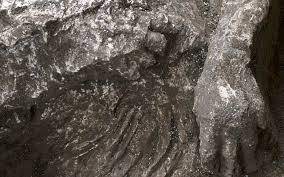
The Italian Culture Ministry announced on November 21 the discovery of well-preserved remains of two men, who perished during the volcanic eruption of Mount Vesuvius in 79 AD. The eruption was a catastrophic event that destroyed the ancient Roman city of Pompeii and killed around 16,000 people.
Daily Current Affairs Quiz 2020
Key-Points
Located in southern Italy near the coastal city of Naples, the 4,203-ft tall Vesuvius is the only active volcano in mainland Europe.
Vesuvius has been classified as a complex volcano (also called a compound volcano), one that consists of a complex of two or more vents.
Vesuvius typically has explosive eruptions and pyroclastic flows –– defined as a high-density mix of hot lava blocks, pumice, ash and volcanic gas.
It has erupted more than 50 times, and is considered among the most dangerous volcanoes in the world due to its proximity to Naples and surrounding towns.
Its last serious eruption, lasting two weeks, was in 1944 during World War II, which left 26 Italian civilians dead and around 12,000 displaced.





